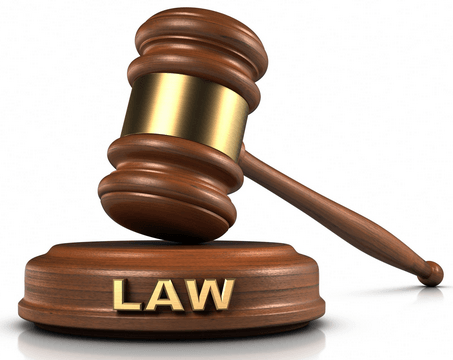ITLOS to deliver judgment in Ghana-Cote d’Ivoire oil boundary dispute next month
 There is uncertainty in Ghana and Ivory Coast as the International Tribunal on the Law of the Sea (ITLOS) prepares to deliver its judgment in the disputed oil rich oceanic boundary case between the two countries.
There is uncertainty in Ghana and Ivory Coast as the International Tribunal on the Law of the Sea (ITLOS) prepares to deliver its judgment in the disputed oil rich oceanic boundary case between the two countries.
The ITLOS decision is expected in September 2017 and Ghana’s oil reserves could increase should the verdict go in its favor. This is due to the fact that the country’s largest oil and gas discovery by HESS Petroleum is located in this area.
Dr Steve Manteaw, member of Ghana’s Public Interest and Accountability committee believes that a decision by ITLOS on the disputed area would help to settle the disagreement once and for all.
Tullow Oil, the largest oil producer in Ghana is looking forward to drilling 13 more wells in addition to the 11 wells it has already drilled as part of its expansion drive in the area. Out of 24 wells Tullow drilled only 11 wells from its full plan due to a drilling moratorium imposed by ITLOS.
Ghana ended its second and final round of arguments at the ITLOS in Hamburg, Germany, accusing its neighbour Cote d’Ivoire for intentionally turning a blind eye to Ghana’s legal arguments.
According to the legal team from Ghana, Cote d’Ivoire’s arguments lacked merit as they have no evidence to back claims that Ghana had moved into Cote d’Ivoire’s maritime space.
The Attorney-General and Minister of Justice, Ms Gloria Afua Akuffo, officially ended Ghana’s oral arguments at the tribunal with a call on ITLOS to reject Cote d’Ivoire’s claims that Ghana has moved into its maritime boundary.
“And finally, we ask you to reject Cote d’Ivoire’s attempts to argue that an oil field built up and developed over decades should have been abandoned overnight in 2009 when Cote d’Ivoire decided that a different boundary would suit it better.
“The cynicism here is all that of Cote d’Ivoire, I am afraid to say, not of Ghana,” the Attorney-General noted.
She prayed the Special Chamber to apply well-established legal principles to a clear and consistent body of evidence.
“We submit that the law and the evidence point inexorably to the maritime boundary observed by both parties for half a century – the line, which we have termed the customary equidistance boundary. We say: You must uphold that line either as a result of the parties’ tacit agreement or by way of an adjustment to the provisional equidistance line to achieve an equitable solution,” Ms Akuffo prayed.
She said the duty of the Special Chamber was to bring finality to the dispute with what she termed as a “most valued neighbour and establish certainty of legal rights and entitlements of the parties’ fortune in the conduct of their affairs in the future.”
According to her, it would “be most unfortunate, should a contrary outcome, characterized by renewed and disruptive disputation between our two states and extending to third parties, be triggered by the decision of this Special Chamber.”
Ghana’s requests
The Attorney-General and Minister of Justice prayed the Special Chamber to declare that Ghana and Cote d’Ivoire mutually recognized, agreed and applied an equidistance-based maritime boundary in the territorial sea, Exclusive Economic Zone (EEZ) and continental shelf within 200 miles.
She is also praying the chamber to hold that the maritime boundary in the continental shelf beyond 200 miles follows an extended equidistance boundary along the same azimuth (azimuth is a horizontal angle measured clockwise from any fixed reference plane or easily established base direction) as the boundary within 200 miles to be the limit of the national jurisdiction.
Further to that, Ms Akuffo wants the Special Chamber to hold that Cote d’Ivoire was in accordance with international law, estopped from objecting to the agreed maritime boundary.
Another order being sought by Ghana is a declaration that, “The land boundary terminus and starting point for the agreed maritime boundary is at Boundary Pillar 55 (BP 55).”
She said the chamber should also hold that, “The customary boundary between Ghana and Cote d’Ivoire in the Atlantic Ocean starts at BP 55, connects to the customary equidistance boundary mutually agreed by the parties at the outer limit of the territorial sea, and then follows the agreed boundary to a distance of 200 miles. Beyond 200 miles, the boundary continues along the same azimuth to the limit of national jurisdiction.”
Ghana is also asking the Special Chamber to reject Cote d’Ivoire’s claim that Ghana violated the Special Chamber’s April 25, 2015 order, as well as claims that Ghana violated Article 83 of the United Nations Convention on the Law of the Sea (UNCLOS) and Cote d’Ivoire’s rights.
After 10 failed negotiation attempts, Ghana, in September 2014, announced that it had instituted arbitration proceedings at the ITLOS to ensure a resolution of its maritime boundary dispute with Cote d’Ivoire.
In accordance with Article 3(a) of Annex VII, Ghana appointed Judge Thomas Mensah, a former President of the ITLOS, as a member of the tribunal.
“Despite several years of good faith negotiations, including at least 10 rounds of bilateral meetings, Ghana and Cote d’Ivoire have been unable to agree upon the location of their maritime boundary,” then Attorney-General and Minister of Justice, Mrs Marietta Brew Appiah-Opong, announced at a press conference in Accra on September 23, 2014.
By Adu Koranteng
